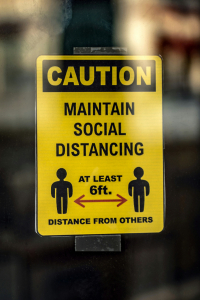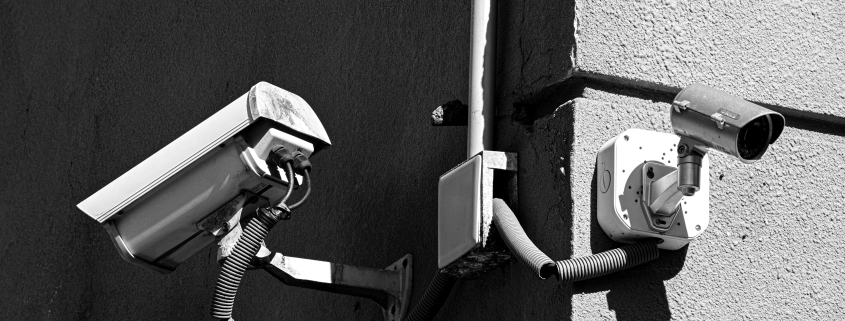Event security and safety: best practices for ensuring attendee well-being
Ensuring the safety and security of event attendees is a paramount responsibility for organizers. In a world where unforeseen incidents can disrupt even the most meticulously planned gatherings, the need for comprehensive event security measures has never been more critical.
From pre-event planning to post-event evaluation, each phase is crucial in creating a secure environment where attendees can focus on enjoying the event rather than worrying about their safety.
This article delves into the essential best practices that event organizers should adopt to guarantee the well-being of attendees.
1 – Pre-event planning
A comprehensive pre-event planning phase sets the foundation for a secure and smooth gathering. This starts long before the curtain rises or the first speaker takes the stage.
The cornerstone of this phase is a thorough risk assessment that identifies potential hazards and vulnerabilities. Event organizers must collaborate closely with local authorities to understand the specific security requirements and regulations applicable to the venue and its surroundings.
Clear communication channels are imperative during this stage. Establishing efficient lines of communication between event organizers, security personnel, and local authorities ensures swift coordination in case of emergencies. This proactive approach to pre-event planning establishes a solid framework for the subsequent layers of security measures.
2 – Venue selection
The choice of venue plays a pivotal role in shaping an event’s security landscape. Beyond aesthetics and capacity considerations, event organizers must prioritize venues with robust security features. These include state-of-the-art surveillance systems, secure access control mechanisms, and emergency infrastructure.

Britt Gaiser—Unsplash
Learning from the past is also a fundamental aspect of venue selection. Analyzing the history of incidents at potential venues allows organizers to make informed decisions. Understanding how previous events were managed and the lessons learned from incidents can significantly contribute to creating a safer environment for attendees.
3 – Technology integration
Nowadays, technology should serve as a force multiplier for event security. Surveillance systems equipped with advanced analytics not only deter potential threats but also provide real-time monitoring capabilities. Access control mechanisms, ranging from traditional methods to cutting-edge biometric systems, play a crucial role in regulating entry and identifying authorized personnel.
Communication tools tailored for security personnel streamline coordination efforts during the event. Radios, mobile devices, and specialized communication platforms ensure that security teams can promptly address emerging situations. The integration of technology into event security not only enhances the effectiveness of measures but also provides organizers with valuable data for post-event evaluations.
4 – Staff training and coordination
The effectiveness of event security is only as strong as the preparedness of the personnel responsible for implementing it. Comprehensive staff training ensures security personnel understand their roles and responsibilities. Regular emergency response drills simulating real-life scenarios will allow teams to refine their reactions.
Coordination among security personnel is vital for a seamless operation. Clear communication channels and well-defined protocols ensure everyone is on the same page during an incident. From ushers to emergency response teams, a well-coordinated effort enhances the overall security posture of the event, reassuring attendees and providing a swift response to potential threats.
5 – Crowd management
Effective crowd management is crucial to ensuring the safety of event attendees. Strategic planning for crowd control starts with understanding the expected turnout and implementing measures to regulate the flow of people. This includes designated entry and exit points, barricades, and clear signage guiding attendees to their respective areas.
In case of emergencies, clear evacuation plans and wayfinding strategies become paramount. Well-defined escape routes and designated meeting points provide attendees with guidance during high-stress situations. By anticipating and addressing potential crowd management challenges, event organizers contribute significantly to the overall safety and security of the gathering.
6 – Medical assistance
While any event’s primary focus is enjoyment, organizers must be prepared to address medical emergencies swiftly and effectively. Well-equipped first aid stations strategically placed throughout the venue provide immediate assistance for minor injuries. Additionally, having trained medical personnel on-site ensures a prompt response to more severe health incidents.

Glen Carrie—Unsplash
Collaboration with local medical services is crucial for handling emergencies requiring more advanced care or transportation to medical facilities. By prioritizing medical assistance, event organizers demonstrate a commitment to attendee well-being and contribute to a safer overall environment.
7 – Communication strategies
Clear and effective communication is essential to successful event security. Before the event, organizers should communicate transparently with attendees about the safety measures in place. This includes providing information about emergency exits, first aid stations, and any relevant safety protocols.

Tim Mossholder—Unsplash
During the event, rapid communication is essential for responding to incidents promptly. Utilizing technology, such as two-way radios and mobile apps, facilitates quick and coordinated responses among security personnel. Clear and concise announcements to attendees during an emergency help maintain order and ensure everyone is aware of the situation.
8 – Post-event evaluation
The final act in ensuring event security is a thorough post-event evaluation. This stage involves a critical review of incident reports, response strategies, and overall effectiveness. By examining what worked well and areas that need improvement, organizers can enhance their security measures for future events.
Gathering feedback from attendees is equally valuable. Understanding their perspective on security measures helps organizers gauge the effectiveness of communication strategies and identify any areas of concern. A commitment to continuous improvement through post-event evaluations reinforces the organizer’s dedication to providing all attendees with a safe and enjoyable experience.
In conclusion
When organizing events, prioritizing attendee well-being through robust security measures is not just a responsibility but a necessity. From meticulous pre-event planning to leveraging advanced technology and from staff training to effective crowd management, each step contributes to the overall safety of attendees. By embracing a commitment to continuous improvement through post-event evaluations, organizers pave the way for safer, more secure gatherings that allow attendees to focus on the experience, free from unnecessary worries.
In the world of event security, vigilance, preparation, and a dedication to best practices ensure that the show goes on safely and successfully.
Author : Véronique Colombani


